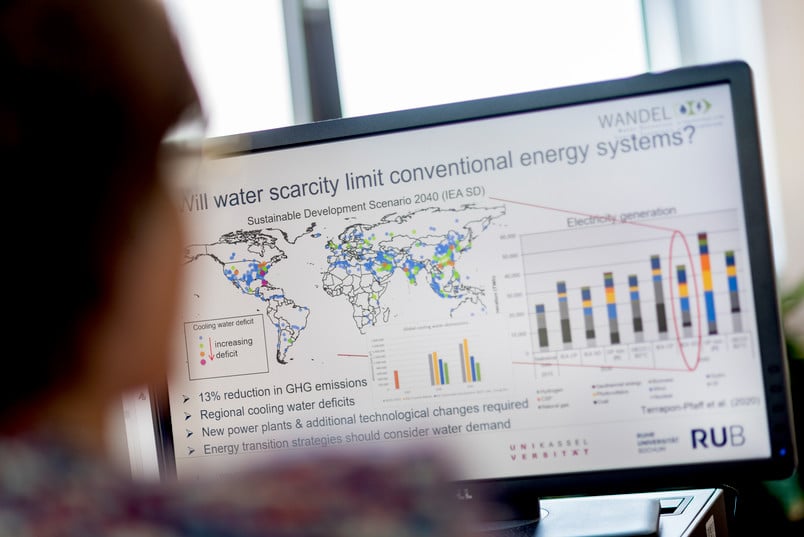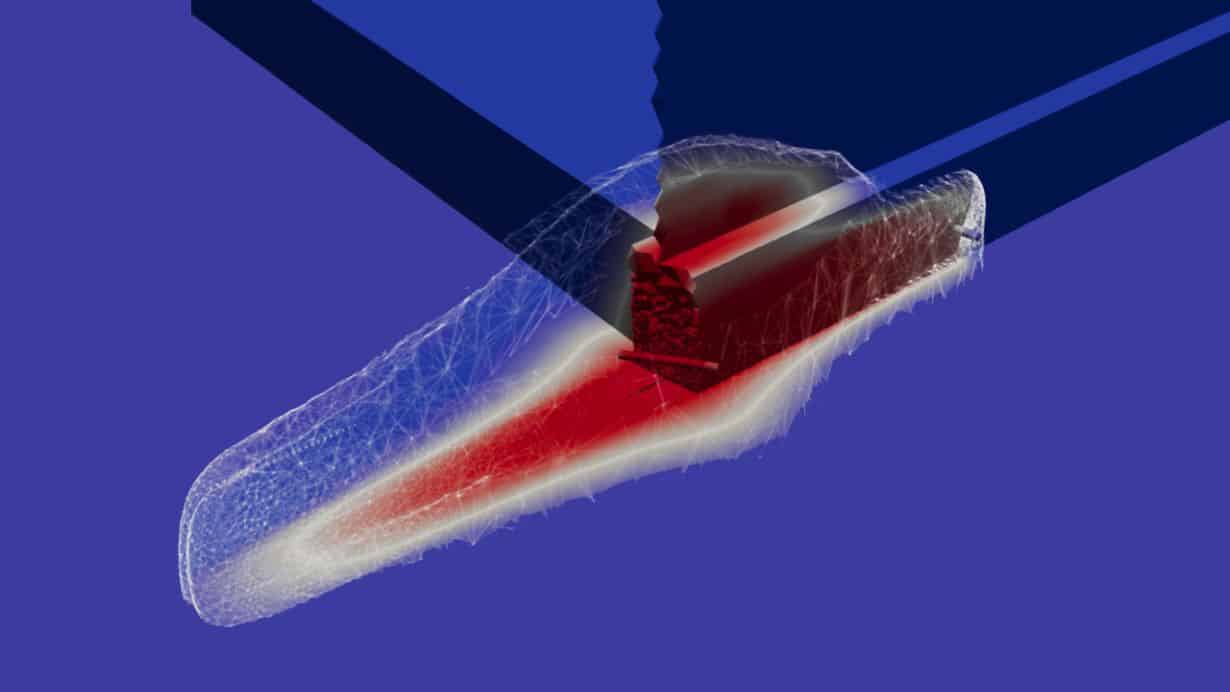
The use of renewable energies can have unexpected repercussions on the global water supply. For example, because water is needed for cooling. Prof. Dr. Martina Flörke believes that far too little thought has been given to this issue. She is professor of technical hydrology and water management at the Ruhr University Bochum (RUB) in Germany. She advocates not only looking at CO2 emissions, but also taking into account other environmental influences. The impact on water resources, for example.
She and her team have developed a model that can compute the availability of and demand for water around the world. That model, called ‘WaterGAP3’, subdivides Earth’s land mass into 2.2 million grid cells. At the equator, this corresponds to a cell size of nine by nine square kilometers. For each land cell, the researchers entered physiographic and meteorological data into the model, including land coverage, soil composition, daily precipitation, temperature and solar radiation. Based on this, the algorithm simulates the terrestrial water cycle. How much precipitation in each cell seeps into the soil and evaporates. And how much water is then available both directly and as groundwater runoff into rivers and aquifers. The simulation can go back to pre-industrial times and look ahead to the year 2300.
Prediction up to the year 2040
Accordingly, the group calculated the availability of water around the world, taking into account only renewable water resources, i.e., not fossil aquifers. Next, the team checked water availability against planned water extractions. To do this, they also included 48,000 locations of power plants and their water consumption. To make a forecast for the year 2040, the researchers relied on four future scenarios prepared by Greenpeace and the International Energy Agency. These scenarios, presented in 2014 and 2015, describe how the energy mix could develop in the future.
For example, one scenario describes what types of energy would make it possible to limit global warming to 2 degrees Celsius and relies heavily on photovoltaics, solar power plants, biomass power production, wind and hydropower. The researchers recreated this energy mix of the four scenarios in their model. In the process, they assumed that in the future, more electricity will be generated with these methods in locations that are already producing energy using photovoltaic cells, for example.
Also interesting: An app that tells farmers when to water
“Of course, we have no way of knowing at which locations more solar panels will be built in the future. We can therefore only work with presently existing locations in our model. Even though this is admittedly a weak point, because in future, generation will also take place at other locations,” explains Martina Flörke. However, the essence of the calculations is not affected by this.
A shortage is expected at up to 42 percent of the sites, where more water will be needed in the future than will be available. “And that does not even take into account the fact that the demand for water in these regions may also increase for other reasons. For example, because fields need to be irrigated more frequently due to the effects of climate change,” the scientist adds.
Extreme drought in the Mediterranean
Water shortages are especially anticipated in western America, in the Middle East and northern Africa, in southern Europe, and in some places in southern and eastern China and India. “Especially in the Mediterranean region, it is very likely that drought extremes will become more frequent,” says Flörke. Which means that some locations currently used for energy generation need to be fundamentally called into question.
“The model analysis clearly shows us that it would definitely not be advantageous to expand energy generation at the current sites,” concludes the Bochum-based researcher. In addition, more efficient technologies, storage options for water and energy, and alternatives to the use of fresh water, for instance treated wastewater, are all needed.
You can also read the in-depth article on this subject in the scientific journal Rubin.
Selected for you!
Innovation Origins is the European platform for innovation news. In addition to the many reports from our own editors in 15 European countries, we select the most important press releases from reliable sources. This way you can stay up to date on what is happening in the world of innovation. Are you or do you know an organization that should not be missing from our list of selected sources? Then report to our editorial team.







